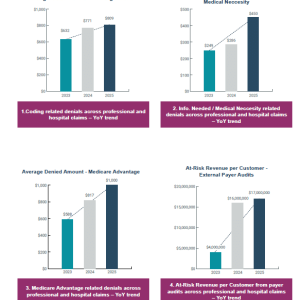If you’re like most organizations, you’ve probably come across your fair share of bumps in the system transition road. Workflows are interrupted, unfamiliarity is commonplace, and sometimes organizational leaders are met with staff resistance to change. Confusion as to why the organization is changing systems is present, a hesitation towards change is palpable, and leaders are frequently left frustrated as to how to unite their staff.
Instead of viewing the system change as an uphill battle, try to look at it as though you were experiencing culture shock from visiting another country. Routine activities may no longer be available to you, your default resources may be hard to find, and you may even have to speak a foreign language. This may be similar to how your staff feels about a systems change.
One of the top reasons for resistance to change is the discomfort of the unfamiliar and this can manifest in a variety of ways: some staff may not be aware of the organization’s vision of the finished project and therefore question the purpose of change, others may question how this change will affect their jobs, and others may be hesitant to change the ways in which they interact with the system simply out of routine habit. Another common barrier with system changes is lack of organizational communication.
So how can organizations prepare staff for a systems change successfully? By reviewing these key elements, you may be able to avoid culture shock and resistance to change.
Communication
It is important that top management communicate the vision for the project and the future of the organization. Communicating the change that will occur and the reasons for it will engage employees and help them to understand the necessity of it. Communicating this to all levels of your organization and explaining each level’s role in the project will empower teamwork and eliminate unexpected surprises. Hearing it from top management sends a message that they care. For example, holding staff meetings with the entire organization or top management attending departmental meetings. This allows top management to interact and reinforce clear communication.
Many organizations fail to communicate a clear plan for every phase of the project but users must know how the system affects their roles and departments, understand all the new workflows, and how they will work for each of their job-specific functions. Doing this as early as you can in the system change process is crucial to ensuring your staff is engaged throughout the entire implementation.
Outcomes
Establishing common goals related to the project completion will encourage staff to work toward the vision that was initially communicated. This will help staff focus on the outcome instead of the actual change, encouraging less resistance. A way to focus on the progress of the implementation is by tracking metrics and establishing organizational, departmental, and individual goals. Keep performance results as a primary objective and encourage accountability to these goals so as to foster ownership of the change, which can dramatically improve the perspective of the project.
Workflows
Because no one can assume the new system will be able to handle everything the legacy system handled, leadership should create opportunities to discuss all aspects of workflows prior to building the new workflows in the new system. A seemingly small but surprisingly vital part of a systems change is having the departmental managers understand and be able to communicate changes in workflows, both in the legacy and new system. A team that is able to understand current and future state allows each department to complete a workflow assessment that will pave the way for implementation when the time comes. Preparedness to discuss all avenues of the department workflows, question how specific details will work, and the ability to explain details will contribute to good results.
Organization Chart and Resources
Looking more towards the internal maintenance side of implementations, some changes may be necessary to the organizational resource chart. Because implementing a new system often requires changes in staff workloads, you may need to evaluate if certain positions need to be tweaked. Are there positions that become obsolete given the capabilities of a new system? Do you need additional staff to maintain the changes that came with the implementation? More still, which positions do you need to keep but may need to change daily activities? For example, an implementation such as an EMR now sends charges through to the practice management system eliminating charge entry staff, but new staff is needed to review charge edits. An adjustment to staff may require that charge entry staff now be called charge review staff on the organizational chart.
Another thing to consider during implementation is the nature of your existing resources. Do you currently have enough staff to manage their regular work load in addition to implementing the changes of the new system? If not, new resources may be necessary to make the implementation successful, on time, and on budget. Some organizations utilize supplemental staffing or outsourced expert resources to ease the overwhelming workloads.
Training
A not-so-surprising factor in a systems change is the necessity of training. It’s crucial for organizations to include their training department in the scope of the project. In my experience, there is so much value in having the training department included in the workflow discussions and testing. Doing so eliminates all sorts of headaches down the road. Thoroughly planning the training phase of your system change allows the training staff to better educate and assist users and it also brings to light the importance of tailoring the training to job-specific workflows as opposed to just focusing on whole-system training.
Getting your trainers up to caliber is also vital in this phase. Trainers get tough questions as to why the system will not function for the staff to complete a task, users want to know how the system resolves a specific scenario, and they are also the first line of defense to helping the staff adjust to the new system – workflows and all. The expectation of the trainer is to know how to walk that user through the system to get the outcome they need to get their job done and you want to ensure that not only the trainer is confidently able to do this, but that you have allotted your organization enough time for your staff to complete their training.
Testing
Now that your staff understands the changes in their workflows, how it will affect their daily routines, and have been trained successfully in the new system, it’s time to put it to the test.
You’ll want to identify “super users” within your organization prior to testing. These individuals are current staff who are confident in the new system, are hard workers and team players. Super users are great assets to the success of the testing process for the implementation because they not only picked up the new mechanics well, but also already have rapport with staff who may be displaying resistance. Trainers and super users can easily identify issues with workflows when entering data into the new system and they understand when the system is not functioning appropriately for each task. They would know if the system does not accommodate current workflows and would be able to smooth any complications coming from other staff about disruptions within job tasks so that when go-live comes, most of the kinks have been worked out.
Policy and Procedures
As the workflows, protocols, and system changes are established, policy and procedures should be created and finalized simultaneously. Procedures provide clear guidance and leadership needs to ensure there is no ambiguity in the organization’s policies. Forming change management committees ensures policy and procedures are created with approval for the entire organization. At the grassroots level, this also limits staff from making their own changes without getting approval from the organization as whole.
Feedback
Lastly, management should provide feedback during and after a system implementation. Detailing successes and areas for improvement throughout the project are opportunities to ensure go-live is as smooth and as successful as possible. It relates back to communication and keeping everyone aware of the change and informing staff of how this massive project is going. Leadership can also use this as an opportunity to express that the purpose of the project is to ensure the organization’s long-term success and that will become a better, more patient and provider satisfied organization that is striving to become the best that healthcare has to offer.
Additionally, feedback doesn’t have to stop at go-live. In fact, I would encourage leadership to use this momentum and continue to provide and receive any feedback after the project is complete. This encourages unity, trust, and fosters a new culture that was instigated by the system change.
After all elements and factors are taken into effect, you will begin to identify the areas and departments that need extra attention. Like traveling to a different country, learning what to expect, what tools are available, and having someone trustworthy by your side can be the difference between a difficult and a successful system change.







